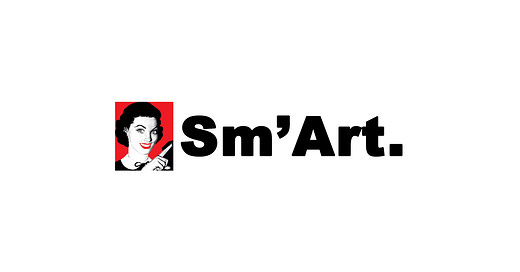Welcome to Smart Art.
Unraveling media myths. Bringing reality back to screen zombies. Start your journey here.
In another moment down went Alice after it, never once considering how in the world she was to get out again. – Alice in Wonderland by Lewis Carroll
It took me a while to figure out my point of view. It started with Orson Welles.
Perhaps it is an intrinsic trait, for even as a young child, I had a vivid imagination. The television made for a natural companion. I would sit for hours and watch stories after stories flicker across my retinas and into my heart.
Many years and many countries later, when for the first time I was given the option to select what I wanted to study (I was in the 7th grade, by then my family had moved to the Silicon Valley, at the time still a nascent tech hub ), I took a media class.
That is when I had my first peak behind the veil. I’ll write about lessons from Orson Welles in a future post, but if you haven’t yet stumbled upon “The War of the Worlds Broadcast” from 1938, it’s a living example in history where a creative (Orson Welles) inspired mobs to take to the streets through a bone-chilling fictional radio broadcast describing aliens landing in Grover's Mill, New Jersey.
I realized the people who know how to use media the best, are people with direct access to your hearts.
This is an inspiring fact for a media artist. I became thrilled with everything related to Orson Welles. I felt (still feel) that he was a genius, my personal ghost, someone I could understand and relate to. All young girls have fantasies, and mine was to be the CEO of Viacom (because at the time they were airing TRL, and I felt that it must be the coolest thing in the world to be Sumner Redstone working in the building and creating MTV).
—
Years later, I ventured blind through media, a filmmaker, a producer, a writer, a director, an analyst, a consultant…And with each passing year, I became increasingly disenchanted.
Media today is transformed - This is redundant as we know this. Over the years, my interest in media has expanded and collapsed, reoriented and detached. How does social media fit into the world of beautiful, riveting storytelling? Who are the “artists” behind those tools, manipulating the masses into mindless social comparison? More personally, I wondered, What drives me in this changed world?
An eternally true lover of media, I was now critical of the constructions behind it. I watched as the complex, flawed, and beautifully maniacal characters of Stan Lee became fabricated through the printing press of Disney-owned Marvel. I struggled as I watched beauty-crazed young women inject their faces with plastic, becoming, ever-so-literally, the plastics of Tina Fey’s Mean Girls.
How could I earnestly say that the thrill of riveting people with bone-chilling storytelling is the same thing as the political and commercial agendas that handicap an attention-deficit mass?
We, the media, the collective internet, are disenfranchising ourselves.
And as I dug deeper to uncover who else I could learn from in this crazy world, I came across media theorist Marshall McLuhan.
Finally a new like-mind to seek refuge in.
“To keep everybody in the helpless state engendered by prolonged mental rutting is the effect of many ads and much entertainment alike.” - Marshall McLuhan
“To keep everybody in the helpless state engendered by prolonged mental rutting is the effect of many ads and much entertainment alike,” he writes in the preface of his thesis work The Mechanical Bride: Folklore of Industrial Man.
“The propaganda value of this simultaneous audio- visual impression is very high, for it standardizes thought by supplying the spectator with a ready- made visual image before he has time to conjure up an interpretation of his own.”
Through McLuhan, I have struck gold. And my aim is to now apply his philosophy to my analysis of art, media, and entertainment. My perspective is economic, but spiritual. As with McLuhan, I will apply the tools of art criticism to look at industries and draw insight. McLuhan writes, “Art criticism is free to point to the various means employed to get the effect, as well as to decide whether the effect was worth attempting.” Unlike other industries, the business of media is the formalized and extrapolated business of artists. Whereas artists use tools to manipulate the senses and drive into the human heart, the business of entertainment uses senses to drive into human pockets.
Agenda-agnostic, my aim is to simply dig deeper.
As a first order of business, I recommend that you, reader, watch a Criterion film to allow your senses to be intelligently reset. At first, you may resist - Like a workout that could wait until tomorrow. But I promise if you persist, you will experience for yourself the difference between ‘art’ and vapid consumption.
Let’s start there.
Thoughts on the subject? On the writing? All feedback is welcome. Drop a comment below, and let’s discuss further.





V interesting!!